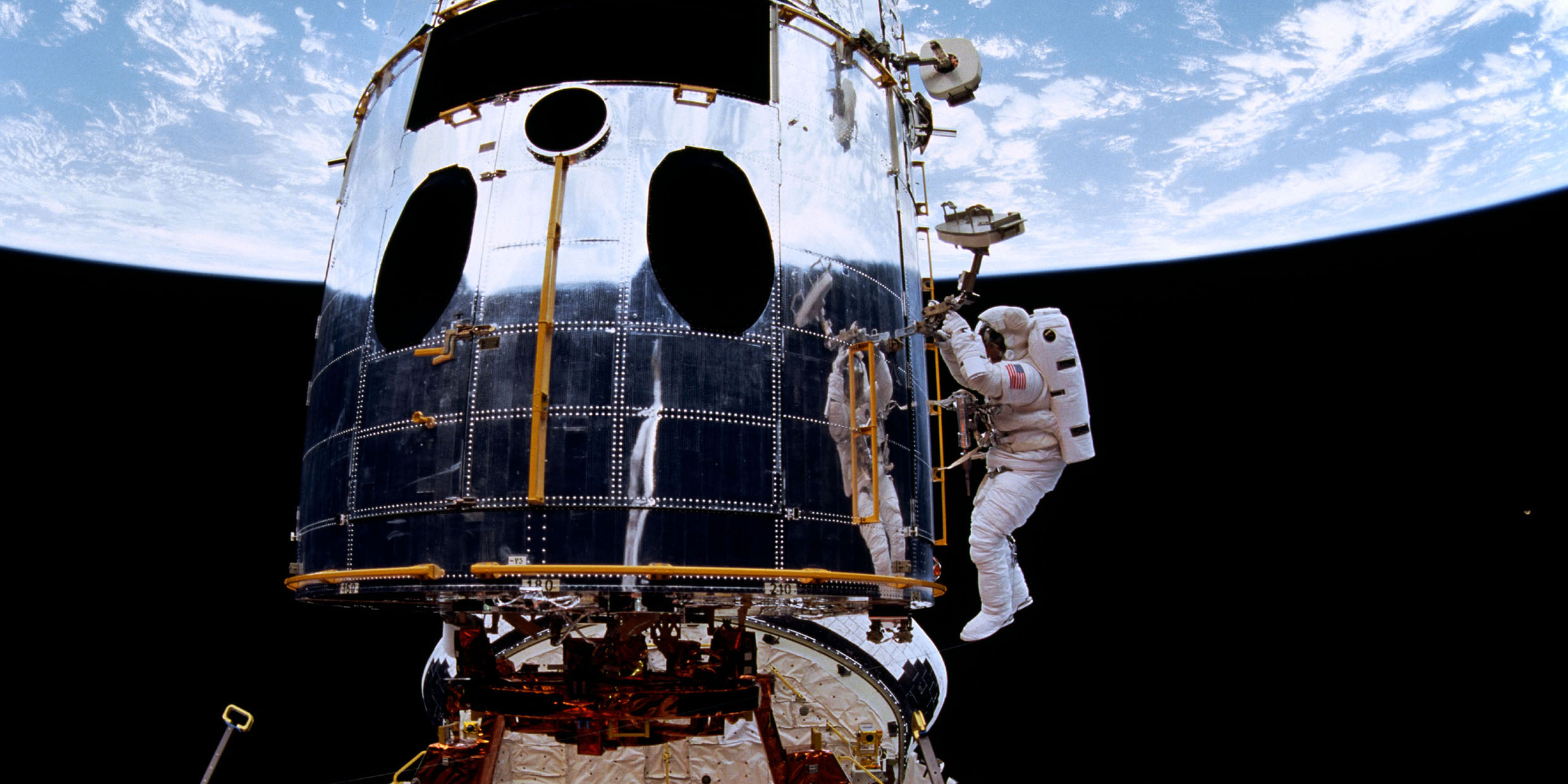Originally published 7 February 1994
The Hubble is out of trouble, NASA assures us.
A shuttle crew has successfully repaired the flawed space telescope. Just look at those widely published pictures of the galaxy M100. Before the repair, a muddy blur. After, crisp as a cracker.
Now scientists can “start solving some of astronomy’s greatest mysteries,” gushes Time magazine: “How old is the universe? Do giant black holes lurk at the cores of galaxies? How did the galaxies get formed? Are there planets circling other stars?”
It’s the NASA publicity engine at full throttle. As if the Hubble is the greatest thing for astronomy since Galileo turned his homemade telescope to the sky.
Don’t get me wrong. I think the space telescope is terrific, and the repair impressive. But the original bungle and the ballyhooed fix are symptomatic of what is wrong with this kind of science. It is too big, too expensive, and too late.
Too big. The space telescope uses brute force — the megathrust of NASA rockets — to accomplish what is essentially a matter of finesse: making delicate images of distant objects.
Too expensive. Perhaps $3 big billion, repaired.
Too late. The project was decades in planning and execution, and in the meantime technology passed it by.
What would those billions have accomplished had they been doled out in more modest portions to a broader segment of the astronomical community? Better light detectors. Sophisticated digital techniques for improving images. Computer-controlled corrective optics to compensate for the blurring effects of the atmosphere. Liquid mirrors (a rotating dish of mercury will adopt precisely the parabolic shape required of an astronomical mirror).
As the Hubble’s costs rocketed, something else got cheaper down on Earth. Computing power. What used to be accomplished in astronomy with tons of glass and steel can now be done by calculation.
An example: Twenty years ago, the mirrors of telescopes needed to be massive to ensure the constancy of their shape. But the heavier they got, the more gravity caused them to warp and sag as they moved around. That was one advantage of placing a telescope in orbit: no apparent gravity. However, computers can now sense mirror distortions and correct them as they occur. Cheaply. On the ground.
The same for blurring effects of the atmosphere.
In other words, much of the reason for going into orbit has vanished during the time it took to get there.
If the Hubble images are better than present ground-based images, it is a marginal and temporary advantage, not a revolution. If ground-based astronomers had spent the same kind of money they might already have surpassed the image quality of the repaired Hubble.
So for NASA or Time magazine to say that astronomers can now start solving questions such as “How old is the universe?” is pure bunk. Astronomers started answering that question a long time ago, as well as the other questions listed by Time. The Hubble will undoubtedly contribute to our knowledge, but I will be very surprised if it dramatically modifies our understanding the universe.
Then why does NASA make such extravagant claims? Well, if you had spent upwards of $2 billion of the taxpayers’ money for an inexcusably flawed telescope, and maybe another $1.2 billion to fix it, you’d be pushing all the buttons too. Yes, of course NASA is proud that the telescope has been repaired, and we should be proud with them; it is a spectacular achievement. But we should keep in mind that the era of multi-billion-dollar science experiments is coming to an end.
It used to be that there were two branches of science: theoretical and experimental. Theories were affirmed and refuted by experimental observations, and experiments often suggested new theories. As scientists probed into the heart of atoms and outward to the edge of time, the machines necessary to do the experiments became ever more expensive. The recently cancelled superconducting supercollider, projected at $11 billion, is a case in point.
Now there is a third branch of science: computational. Fast, cheap supercomputers make it possible to do a kind of science that is not quite theoretical and not quite experimental. Complex systems — the Big Bang, galaxies, biological molecules, the human brain — can be represented in computers as digital data, and the computer calculates how the system behaves. The results are compared with the real world.
This revolution of computing power will inevitably lead to new digital theories of reality, truly revolutionary ideas about what makes the world tick (chaos, fractals, and cellular automata are hints of things to come).
Theories of the future will be developed and tested with the one kind of technology that is getting cheaper with each passing year: computers. And the finesse of computer calculation, rather than brute force, will carry more of the burden of experimental research.
Already, computation is transforming astronomy, as it is changing every other field of research from neurobiology to protein chemistry. The Hubble space telescope is not so much the leading edge of a revolution, as the trailing edge of yesterday’s science.
The Hubble Space Telescope is still operational as of 2021, after five servicing missions by NASA astronauts. Its multi-billion dollar successor, the James Webb Space Telescope, is scheduled for launch in late 2021. ‑Ed.



